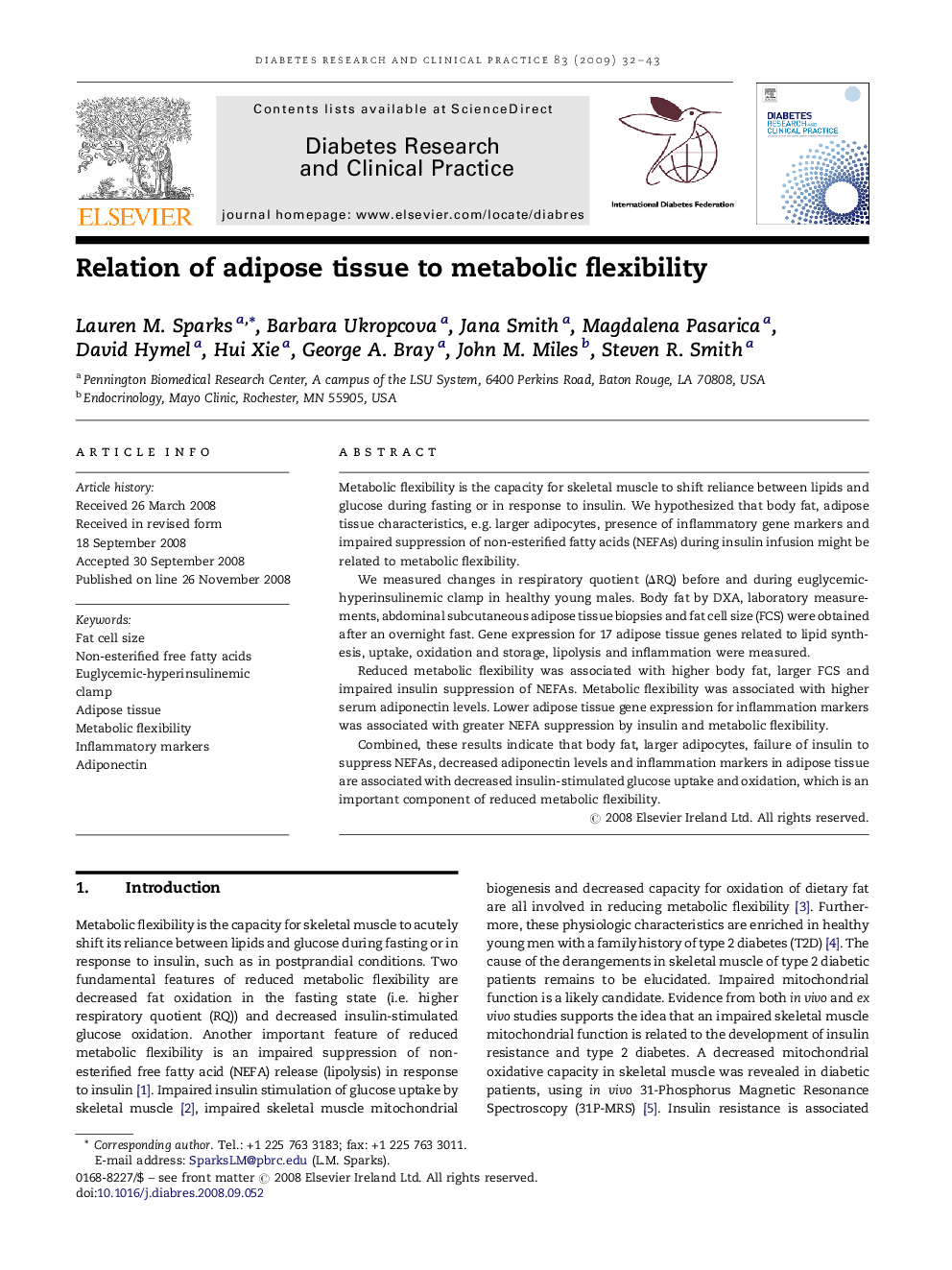| کد مقاله | کد نشریه | سال انتشار | مقاله انگلیسی | نسخه تمام متن |
|---|---|---|---|---|
| 2797870 | 1155669 | 2009 | 12 صفحه PDF | دانلود رایگان |

Metabolic flexibility is the capacity for skeletal muscle to shift reliance between lipids and glucose during fasting or in response to insulin. We hypothesized that body fat, adipose tissue characteristics, e.g. larger adipocytes, presence of inflammatory gene markers and impaired suppression of non-esterified fatty acids (NEFAs) during insulin infusion might be related to metabolic flexibility.We measured changes in respiratory quotient (ΔRQ) before and during euglycemic-hyperinsulinemic clamp in healthy young males. Body fat by DXA, laboratory measurements, abdominal subcutaneous adipose tissue biopsies and fat cell size (FCS) were obtained after an overnight fast. Gene expression for 17 adipose tissue genes related to lipid synthesis, uptake, oxidation and storage, lipolysis and inflammation were measured.Reduced metabolic flexibility was associated with higher body fat, larger FCS and impaired insulin suppression of NEFAs. Metabolic flexibility was associated with higher serum adiponectin levels. Lower adipose tissue gene expression for inflammation markers was associated with greater NEFA suppression by insulin and metabolic flexibility.Combined, these results indicate that body fat, larger adipocytes, failure of insulin to suppress NEFAs, decreased adiponectin levels and inflammation markers in adipose tissue are associated with decreased insulin-stimulated glucose uptake and oxidation, which is an important component of reduced metabolic flexibility.
Journal: Diabetes Research and Clinical Practice - Volume 83, Issue 1, January 2009, Pages 32–43